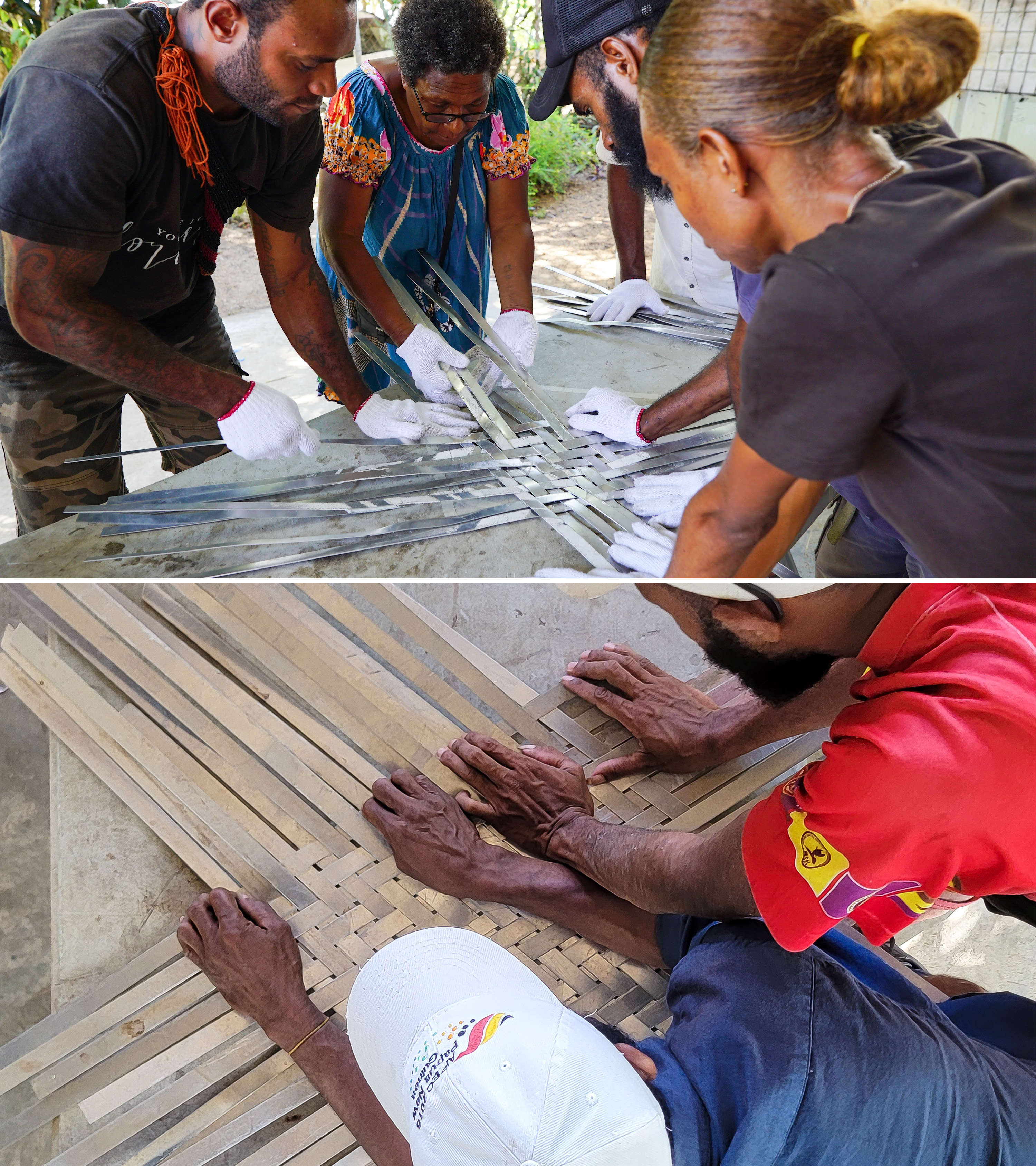
PORT MORESBY, Papouasie-Nouvelle-Guinée — À l’approche de l’inauguration de la maison d’adoration bahá’íe en Papouasie-Nouvelle-Guinée (PNG), les membres de l’équipe d’architectes, composée d’Henry Lape et Saeed Granfar de Port Moresby, reviennent sur leur collaboration pour créer un projet qui incarne le principe d’unité dans la diversité.
M. Granfar a évoqué le défi que représentait la création d’une structure qui trouverait un écho universel dans l’une des régions du monde les plus diversifiées sur le plan linguistique et culturel. « Notre objectif était de trouver un thème fédérateur, un fil conducteur qui relie les divers peuples de cette région », a-t-il déclaré.
La réponse réside dans l’artisanat traditionnel du tissage, un élément omniprésent à la fois dans les maisons des villages et dans les centres urbains de PNG.
M. Lape a précisé : « Le tissage fait partie intégrante de notre identité culturelle, symbolisant notre interconnexion et l’entrelacement des vies et des communautés.
« C’est devenu notre motif central pour la maison d’adoration, un espace sacré ouvert à tous, où les gens peuvent venir prier et réfléchir à leurs contributions à la société. »
Un effort commun
M. Lape a expliqué que tout au long de la construction du temple, les habitants des communautés environnantes ont joué un rôle important en participant aux différents aspects du processus de construction. « Leur implication pratique a considérablement renforcé leur sentiment d’appartenance au temple », a-t-il déclaré.
L’esprit de collaboration qui a émergé s’est révélé particulièrement crucial pendant la pandémie.
« La pandémie a posé des défis uniques, a déclaré M. Granfar, perturbant de nombreux services et métiers essentiels au projet. »
Il a ajouté : « Malgré ces obstacles, l’équipe du projet et la communauté étaient déterminées à faire avancer la construction. Nous avons trouvé des moyens créatifs de tirer parti des divers talents et compétences disponibles parmi les habitants de la région. »
Dirigée par le chef de projet Kia Fanaian, l’équipe locale a fait preuve d’une grande ingéniosité pour combler les lacunes causées par les perturbations et a achevé la façade du temple.
Au fur et à mesure de l’évolution du projet, des membres de la communauté ont ensuite rejoint cette équipe locale pour des tâches telles que le tissage complexe de bandes d’aluminium pour orner les murs intérieurs et la sculpture de panneaux de bois pour l’extérieur du temple. Ces activités ont fait appel aux compétences artistiques traditionnelles des membres de la communauté et ont renforcé leur lien profond avec le temple.
Le temple, une force d’harmonie sociale
M. Lape a expliqué ce qu’était le site où se trouve aujourd’hui le temple : « Pendant mes années universitaires, quelques jeunes et moi-même avons entrepris un projet de revitalisation de cet endroit en plantant des arbres et en construisant un mur de protection autour d’eux, destiné à protéger les jeunes plants du feu.
« Travailler sur ce temple est comme une continuation de ce projet, un projet partagé non seulement par moi mais par tous ceux qui ont contribué à transformer cette endroit en un sanctuaire paisible. »
M. Granfar a souligné l’impact plus large du temple sur la communauté, le décrivant comme « une lueur d’espoir à Port Moresby ».
M. Lape a noté à quel point la conception de la maison d’adoration s’harmonise avec les aspirations de la population de PNG. « Le principe de l’harmonie sociale revêt une signification profonde dans notre nation, a-t-il déclaré. Le nouveau temple, qui incarne le principe de l’unité dans la diversité, fait écho à notre engagement national de favoriser un sentiment d’humanité partagée entre quelque 1 000 tribus et plus de 800 langues distinctes. »
